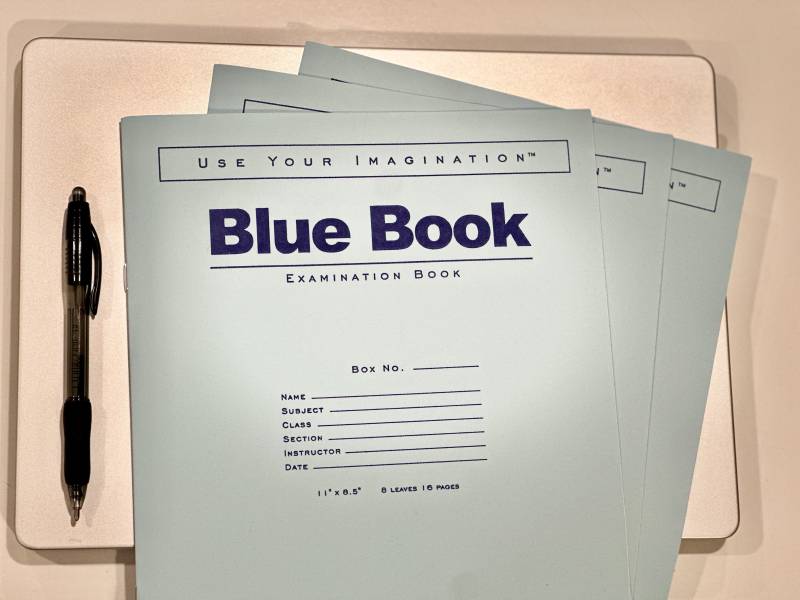Jason Coupet used to administer blue book exams before the COVID-19 pandemic, but when distance learning went into effect, the associate professor of public management policy at Georgia State University said that all exams went digital. However, after in-person classes resumed, exams remained online.
Last year, Coupet started to feel the pressure of generative AI permeating his students’ work, so as a faculty, Coupet and his colleagues started to think about ways to adjust to these changes. That’s when Coupet decided to go back to the paper blue book exams – which can only be completed by hand-writing your answers in pen or pencil – for the 2024-25 school year.
The use of generative AI and other types of cheating during remotely administered exams wasn’t the only reason for Coupet to change his exam format. When students took his exams at home on a computer or laptop, Coupet was required to put parameters on the exam that he normally wouldn’t have to for an in-class test that everyone took during the same class period.
As recently as a decade ago, using tech to administer and grade exams seemed like the dream come true as a responsive, time-saving tool. But now, with AI tools and rampant cheating, the protection of academic and intellectual integrity are being propped up by pen and paper.
Coupet teaches public policy, so he likes for his exam questions to reflect real world dilemmas. Answers are hard to assess when students take tests at home with access to the internet. When students typed their answers, Coupet was concerned that they spent more time worrying about spell-checking and looking up correct answers. Switching to hand written exams ensures that students are focused solely on the content of the questions and applying their own knowledge and reason to the answers.
The Pen is Mightier Than the Keyboard
Research suggests that writing by hand can be more beneficial for learning compared to typing.


